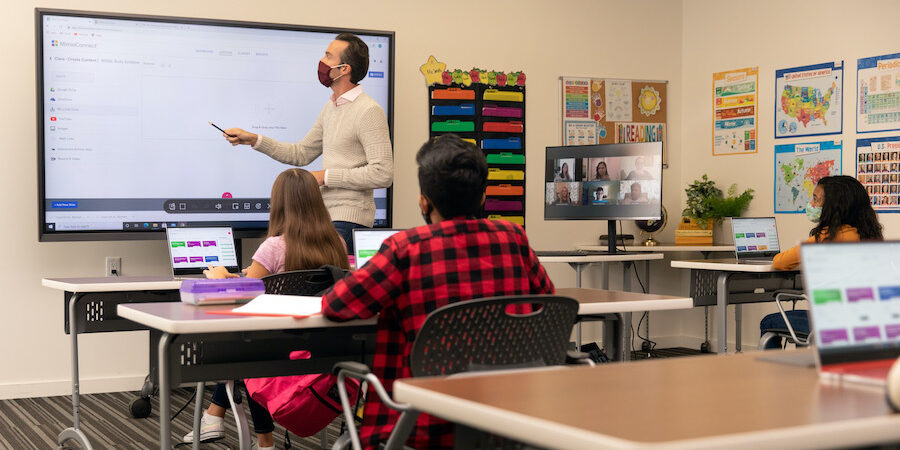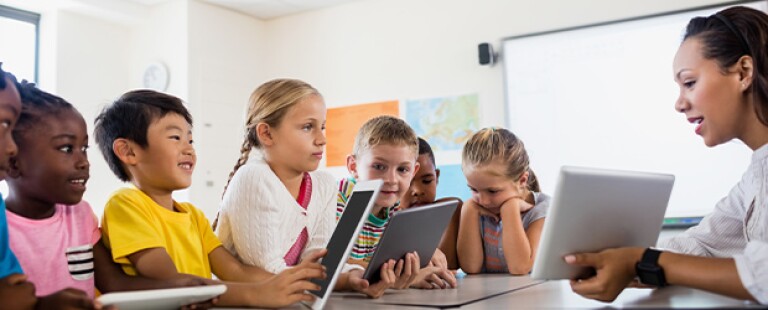Unlock Your Child’s Potential with Primary Science Tuition Singapore
Unlock Your Child’s Potential with Primary Science Tuition Singapore
Blog Article
A Comprehensive Overview to the Numerous Discovering Methods in Main Scientific Research Instruction
The exploration of varied knowing approaches in key science direction offers a chance for educators to boost student involvement and understanding substantially. By taking a look at hands-on discovering strategies, inquiry-based methods, and joint methods, we can recognize efficient techniques that deal with various learning styles. Furthermore, the assimilation of modern technology and differentiated direction plays a critical duty in fostering an inclusive environment. The concern remains: how can these approaches be successfully executed in the class to optimize their influence? The solution depends on a more detailed evaluation of each strategy and its ramifications for training scientific research.

Hands-On Learning Strategies
Hands-on learning strategies play an essential duty in primary scientific research direction, engaging trainees in energetic expedition and trial and error. These methods permit learners to engage straight with products and sensations, promoting a much deeper understanding of scientific concepts. By utilizing manipulatives, models, and real-life experiments, educators produce an atmosphere where pupils can observe, assume, and examine their ideas.
Such techniques not just improve understanding but additionally cultivate crucial reasoning and problem-solving abilities. When pupils take part in tasks like constructing easy makers, growing seeds, or conducting chain reactions, they are motivated to ask questions and look for answers via their very own observations. This experiential approach aids to debunk intricate scientific principles, making them a lot more easily accessible and relatable.
Additionally, hands-on learning advertises cooperation among peers, as trainees frequently operate in groups to conduct experiments or share findings. This synergy not only enhances their learning experience however likewise develops crucial social skills. Ultimately, integrating hands-on techniques in main science instruction fosters a lifelong love of learning and inquisitiveness regarding the all-natural globe, laying a strong foundation for future scholastic searches in science and beyond.
Inquiry-Based Knowing
Inquiry-based discovering is a training approach that motivates trainees to ask inquiries, investigate sensations, and create their very own understanding of scientific concepts. This technique changes the focus from typical teacher-led guideline to a more student-centered experience, where learners take the campaign in their educational journey. By cultivating inquisitiveness, inquiry-based knowing advertises much deeper interaction with the material, permitting pupils to explore subjects in a meaningful context.
In method, this method typically involves hands-on experiments, monitorings, and vital thinking activities that straighten very closely with the scientific method. Students are urged to formulate hypotheses, design investigations, and examine data, which grows necessary abilities such as problem-solving and analytical thinking. The function of the instructor in this framework is to promote expedition, assisting students via the questions process while urging independent thought and cooperation.
In addition, inquiry-based knowing nurtures a feeling of ownership over the understanding process, encouraging students to seek expertise actively. This technique not only boosts understanding of scientific principles yet also fosters a long-lasting love for knowing, gearing up students with the skills essential to navigate an increasingly intricate world.
Collaborative Learning Approaches
Collective learning techniques empower pupils to take part in significant communications with peers, fostering a shared obligation for their educational results. In main science direction, these techniques motivate students to collaborate to discover scientific concepts, address issues, and perform experiments (primary science tuition Singapore). By getting involved in group tasks, pupils can utilize diverse internet viewpoints, enabling for richer understanding and retention of clinical understanding
One secret aspect of joint discovering is the emphasis on interaction skills. Trainees have to articulate their thoughts, pay attention actively to others, and negotiate concepts, every one of which are important proficiencies in both academic and real-world contexts. This social communication not only boosts their understanding of clinical principles yet also advertises teamwork and problem resolution abilities.
When students see the worth of their payments within a group, they are a lot more likely to take possession of their knowing trip. In general, including collaborative discovering approaches in key science instruction grows a vibrant discovering environment that prepares trainees for future scholastic and social difficulties.
Technology Assimilation in Scientific Research
The integration of innovation in primary science instruction improves learning experiences by offering ingenious devices and sources that sustain different teaching techniques, including collaborative discovering - primary science tuition Singapore. The usage of electronic platforms, simulations, and interactive applications allows pupils to involve deeply with clinical ideas, promoting a more hands-on approach to learning
Online labs, as an example, enable learners to conduct experiments securely and efficiently, promoting inquiry-based discovering. These devices can replicate real-world scientific circumstances, permitting pupils to imagine complicated procedures that would be tough to reproduce in a typical class setting. In addition, technology cultivates communication and cooperation amongst pupils, as they can share searchings for and interact on jobs through online platforms.
Furthermore, multimedia discussions and instructional video clips can improve lessons by dealing with diverse understanding styles, making abstract ideas extra easily accessible. Data analysis devices also encourage students to collect and analyze clinical data, enhancing crucial assuming skills. Generally, the tactical incorporation of technology in key science guideline not just improves involvement however additionally prepares students for a highly advanced culture, outfitting them with important abilities for future clinical undertakings.
Set Apart Guideline Methods
Distinguished guideline approaches are important for resolving the diverse More hints requirements of students in key scientific research education. These strategies allow teachers to customize their mentor approaches to accommodate differing capacities, passions, and learning designs within the classroom. By using set apart instruction, educators can develop an inclusive environment that promotes interaction and enhances understanding of clinical principles.
One effective method is to utilize adaptable grouping, which permits pupils to collaborate with peers at comparable ability degrees or with varying point of views. This method urges peer learning and advertises critical thinking. Furthermore, using options in assignments can empower pupils, permitting them to choose jobs that reverberate with their passions while still fulfilling curricular goals.
In addition, integrating tiered projects is one more useful method. Deliberately jobs with differing degrees of intricacy, educators can make certain that all students are properly challenged, despite their efficiency. Utilizing formative analyses to gauge understanding further allows educators to readjust their training techniques find more dynamically, ensuring that each learner receives the assistance they need.
Inevitably, implementing set apart guideline techniques in key scientific research education and learning not only enhances student knowing results but additionally grows an interest for science, preparing students for future scholastic pursuits.

Verdict
In recap, efficient main science direction necessitates a complex technique that includes hands-on knowing, inquiry-based methods, and collective strategies. The combination of technology and distinguished guideline further caters to diverse understanding designs, cultivating an atmosphere favorable to exploration and vital reasoning.
The expedition of diverse knowing techniques in main science direction presents a chance for instructors to boost pupil interaction and comprehension dramatically.Hands-on learning methods play a crucial function in primary scientific research direction, engaging students in energetic exploration and testing.Inquiry-based understanding is an educational approach that urges students to ask questions, check out sensations, and build their own understanding of scientific concepts.Joint learning techniques empower students to engage in meaningful interactions with peers, promoting a common responsibility for their educational outcomes. On the whole, incorporating collaborative understanding methods in key scientific research instruction cultivates a vibrant learning environment that prepares pupils for future academic and social obstacles.
Report this page